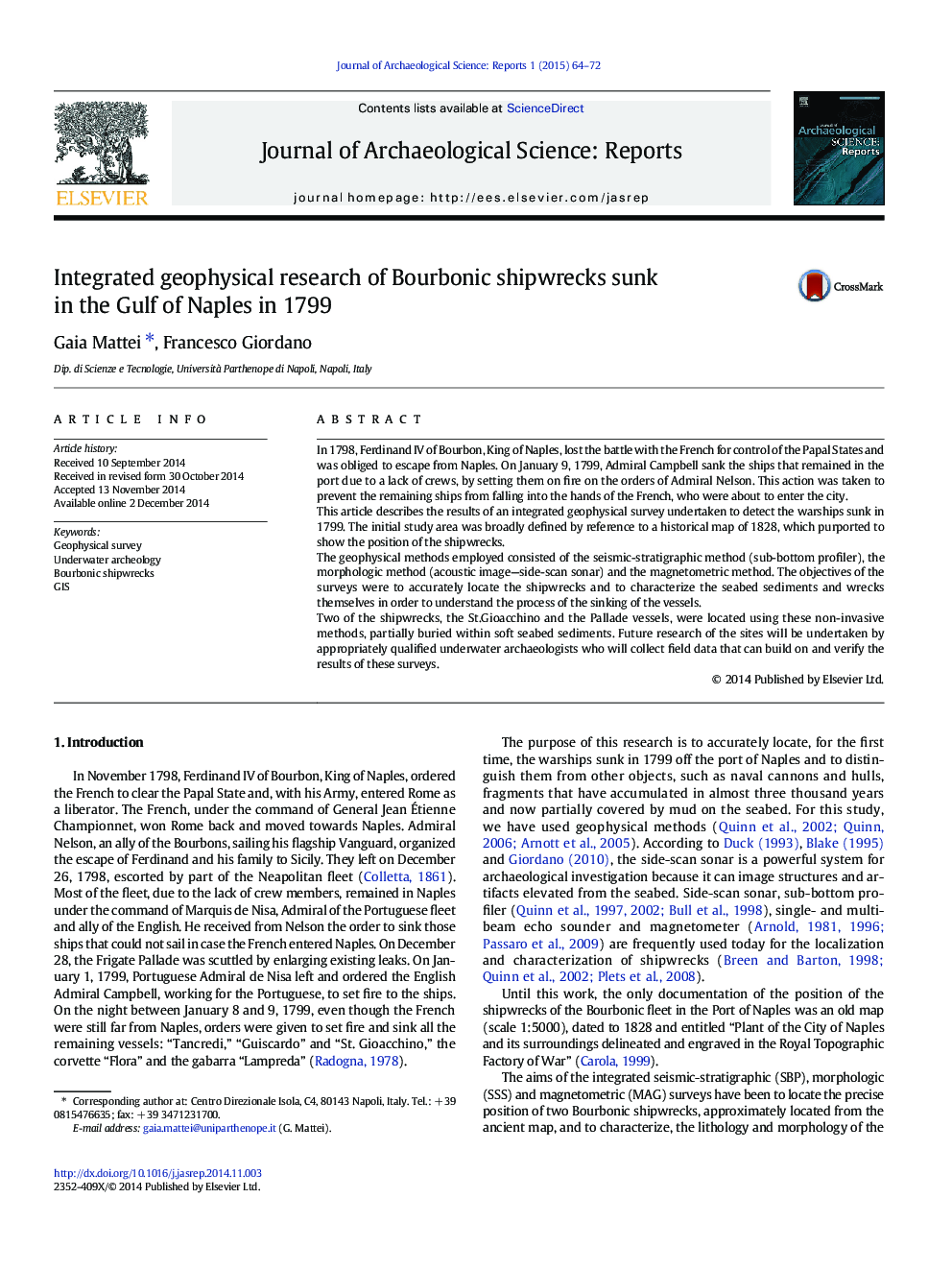| Article ID | Journal | Published Year | Pages | File Type |
|---|---|---|---|---|
| 1037805 | Journal of Archaeological Science: Reports | 2015 | 9 Pages |
In 1798, Ferdinand IV of Bourbon, King of Naples, lost the battle with the French for control of the Papal States and was obliged to escape from Naples. On January 9, 1799, Admiral Campbell sank the ships that remained in the port due to a lack of crews, by setting them on fire on the orders of Admiral Nelson. This action was taken to prevent the remaining ships from falling into the hands of the French, who were about to enter the city.This article describes the results of an integrated geophysical survey undertaken to detect the warships sunk in 1799. The initial study area was broadly defined by reference to a historical map of 1828, which purported to show the position of the shipwrecks.The geophysical methods employed consisted of the seismic-stratigraphic method (sub-bottom profiler), the morphologic method (acoustic image—side-scan sonar) and the magnetometric method. The objectives of the surveys were to accurately locate the shipwrecks and to characterize the seabed sediments and wrecks themselves in order to understand the process of the sinking of the vessels.Two of the shipwrecks, the St.Gioacchino and the Pallade vessels, were located using these non-invasive methods, partially buried within soft seabed sediments. Future research of the sites will be undertaken by appropriately qualified underwater archaeologists who will collect field data that can build on and verify the results of these surveys.
